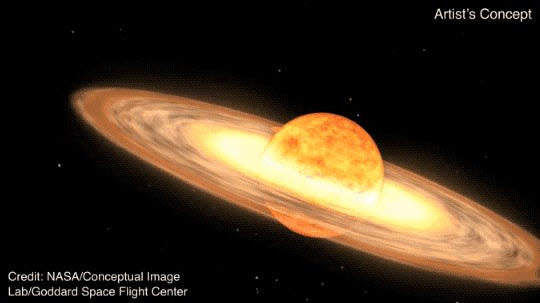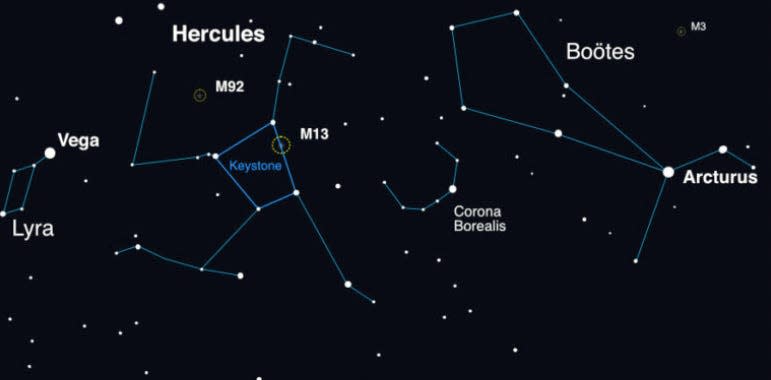'Once-in-a-lifetime' cosmic explosion set to light up the night sky, NASA says
A rare cosmic explosion, visible to the naked eye, is set to take place by September.
It will occur when the star system T Coronae Borealis (T CrB) explodes after a thermonuclear reaction.
The event only occurs once roughly every 80 years, NASA says.
A rare cosmic explosion that NASA describes as a "once-in-a-lifetime viewing opportunity" is expected to take place by September, the space agency has said.
The "nova" explosion will be visible to the naked eye despite occurring 3,000 lightyears away from Earth.
It will occur when the star system T Coronae Borealis (T CrB) explodes after a thermonuclear reaction between the system's white dwarf — which is the core of a dead star — and its red giant star.
"As the red giant becomes unstable from its increasing temperature and pressure and begins ejecting its outer layers, the white dwarf collects that matter onto its surface," NASA says on its website.
"The shallow dense atmosphere of the white dwarf eventually heats enough to cause a runaway thermonuclear reaction – which produces the nova we see from Earth," it adds.

"These novae are basically hydrogen bombs," Bradley Schaefer, an astrophysicist at Louisiana State University, told The New York Times.
What to watch for
Those hoping to see the nova display should look for the constellation Corona Borealis, or "Northern Crown," a small arc near the Bootes and Hercules constellations, NASA says.
"This is where the outburst will appear as a 'new' bright star," it adds.
When it takes place, the star system is set to have a similar brightness to that of the North Star, and, once it peaks, "it should be visible to the unaided eye for several days and just over a week with binoculars," per the agency.

It will then dim and may not be visible for another 80 years, NASA says, adding that the system last exploded in 1946.
"You're going to notice a new star in the sky," Bill Cooke from NASA's Meteoroid Environment Office told The New York Times.
"How often can people say that they've seen a star explode?" he added.
Read the original article on Business Insider

